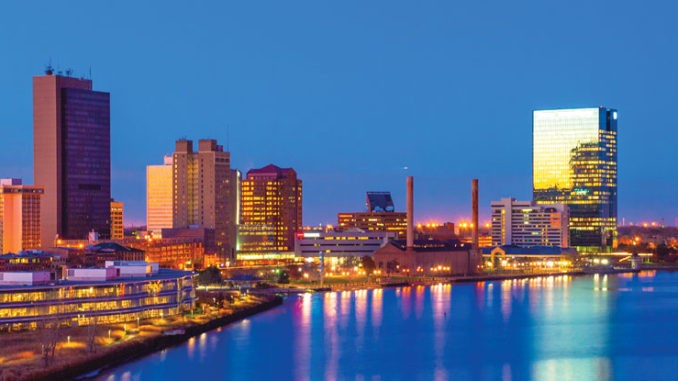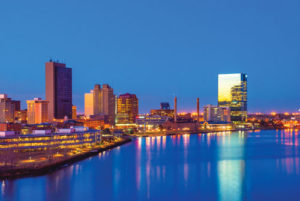
Toledo’s regional chamber plays a key role in region’s economic development
By Lynne Thompson
Wendy Gramza doesn’t hesitate when asked to list a few of the Toledo Regional Chamber of Commerce’s greatest contributions to the economic development of the Glass City and its environs. The organization’s president and chief executive officer notes that in 1948 it raised the money to purchase the land for Toledo’s very first airport and successfully lobbied to establish the port authority. And during the 1990s, the chamber raised over $9 million to help create the Regional Growth Partnership, a privately led economic development group serving Toledo and 17 northwest Ohio counties.
“The airport, the port authority, economic development—those are all the agencies that, even today, really drive the economic prosperity of our region,” Gramza says.

For an organization that now boasts 2,400 members, from sole proprietorships to large corporations including Owens Corning, the chamber’s celebration of its 125th anniversary has been surprisingly low-key. According to Stacey Mallet, vice president of marketing and communications, commemorations have been limited to online promotions. But Gramza says the restraint in tooting its own party horn does not reflect staffers’ enthusiasm for current endeavors.
“The goal right now is to make sure that our traditional economic development is doing its thing and bringing companies to the region. We have the skilled workforce in the talent pipeline so those companies have the workforce they need,” she says, noting that the single biggest challenge for chamber members is sourcing talent. “We have about 23,000 job openings at any given time. And the majority of those are in the manufacturing and related industries.”
To meet that demand, the chamber just completed a study that examined employer skill needs and educational institutions’ programs to make sure the latter fulfills the former. Train is a chamber program that pairs business leaders with parents, teachers and school administrators. The program even places participants in classrooms with students to inform them about the skills area employers are seeking, entry-level positions, and the subsequent training and education needed to be promoted. Train also connects companies requiring customized employee training with a vocational school or community college that can provide that service.
To lure talent to the Toledo area, the chamber has developed an “It Matters Where You Make It” campaign. The endeavor emphasizes the regional, affordable cost of living and accessibility to urban residences, a thriving nightlife provided by bars and restaurants, and a first-class Metroparks system, etc., as well as additional desirable lifestyle attractions.

A “Summer in the City” program helps college interns build networks and shows students what their lives would be like if they relocated to the region. Job candidates with member organizations can take customized, individual tours to introduce residential areas and amenities. “Everything that we do in that campaign is about creating an emotional connection between the candidate and the region,” she says.
But Gramza sees the chamber’s biggest task as motivating locals. That involves residents either rejoining the workforce or become fully engaged in their jobs by inventing a new technology. It also entails developing a process to complete a task more efficiently, or looking for a way to advance from that position. The idea is to encourage employers to prompt those actions by introducing them to internship programs, participating in the chamber’s Train Ready workforce-reentry program for the previously incarcerated and removing barriers to employment. She points out, for example, that there are other ways to verify citizenship, etc., than by requesting a driver’s license, identification some Uber- and Lyft-using Millennials don’t have.
“That’s really what’s on the horizon for us: We have to be absolutely laser-focused on these initiatives to make sure that we can continue to grow our economy,” Gramza says.
